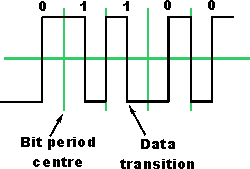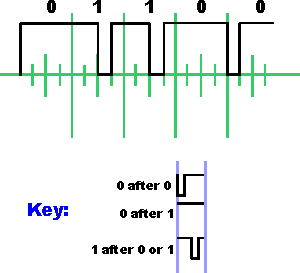NFC Physical Layer: modulation & RF signal
The NFC RF interface has been kept simple but used a number of key features & modulation to provide the required performance.
NFC, Near Field Communication Includes:
What is NFC?
NFC technology
NFC RF signal
Data exchange format
NFC Tags & tag types
NFC security
The NFC RF interface has been developed to keep the interface simple, reduce power consumption and retain reliable communication.
The NFC RF interface also needs to accommodate communication to and from both active and passive devices.
To achieve this the modulation format and overall RF interface has been made relatively straightforward using simple modulation techniques and encoding.
NFC RF signal parameters
NFC uses the global 13.56 MHz allocation as this is an unlicensed radio frequency ISM band.
Using ASK - amplitude shift keying, as the format for the NFC modulation, most of the RF energy is concentrated in the allowed 14 kHz bandwidth, although the sidebands may extend out as far as ± 1.8 MHz.
NFC RF signal coding & modulation
NFC employs two different coding systems on the RF signal to transfer data. In most cases a level of 10% modulation is used, with a Manchester coding format. However for an active device transmitting data at 106 kbps, a modified Miller coding scheme is used with 100% modulation. In all other cases Manchester coding is used with a modulation ratio of 10%.
| Summary of NFC RF Signal Coding & Modulation | ||
|---|---|---|
| Data rate kbps |
Active Device | Passive Device |
| 106 | Modified Miller, 100%, ASK | Manchester, 10%, ASK |
| 212 | Manchester, 10%, ASK | Manchester, 10%, ASK |
| 424 | Manchester, 10%, ASK | Manchester, 10%, ASK |
NFC and Manchester coding
Manchester coding is used for the majority of cases for the NFC communications. The Manchester coding utilises the two different transitions that may occur at the midpoint of a period. A low-to-high transition expresses a 0 bit, whereas a high-to-low transition stands for a 1 bit.
To achieve these conditions it is sometimes necessary to have a transition at the middle of a bit period. Transitions at the beginning of period are disregarded.

NFC and Modified Miller coding
The modified Miller code is a little less intuitive, but provides an efficient form of coding. It is characterised by the pauses occurring in the carrier at di?erent positions of a period. Depending on the information to be transmitted, bits are coded as shown below. A high or "1" is always encoded inth e same way, but a low or "0" is encoded differently dependent upon what preceded it.

used for 106 kbps active device transfers
The NFC RF signal and physical layer is purposefully kept simple and straightforward to ensbale simple passive cards to be able to read and decode the information as required. As low data rates are used, this also enables the RF inteface to be kept as simple as possible.
 Written by Ian Poole .
Written by Ian Poole .
Experienced electronics engineer and author.
Wireless & Wired Connectivity Topics:
Mobile Communications basics
2G GSM
3G UMTS
4G LTE
5G
Wi-Fi
Bluetooth
IEEE 802.15.4
DECT cordless phones
Networking fundamentals
What is the Cloud
Ethernet
Serial data
USB
LoRa
VoIP
SDN
NFV
SD-WAN
Return to Wireless & Wired Connectivity



